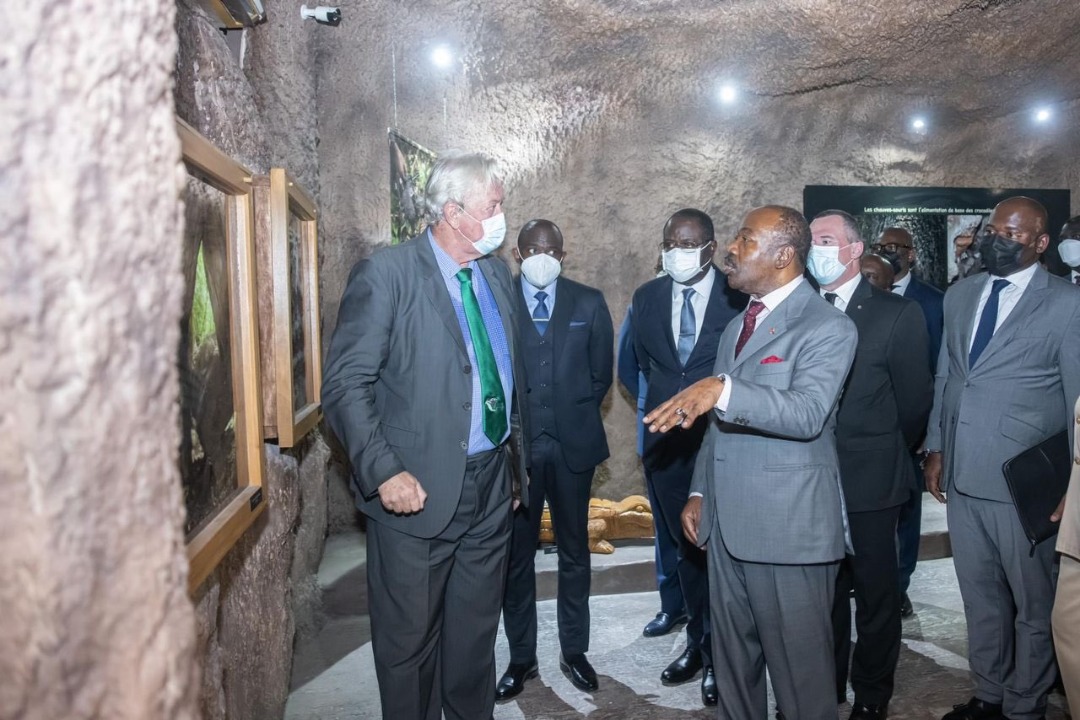
A five-month long exhibition, “Iroungou: From shadow to light”, which highlights the archaeological remains contributing to the knowledge of the history of Gabon and Central Africa still largely unknown, opened at the National Museum of Arts, Rites and Tradition of Gabon on September 14 in Libreville.
The exhibition which is opened until January 2023 is the result of work carried out by the scientific unit of the National Agency for National Parks (ANPN) within the perimeter of the Iroungou cave, located in the province of Ngounié not far from the village of Mbadi.
In attendance were the Minister of Culture and the Arts, Professor Patrick Daouda Mouguiama, the Minister of the Environment, Professor Lee White, and the Ambassador of France to Gabon, Mr. Alexis Lamek,
This discovery, was made possible thanks to the financing by Olam Palm Gabon, Total Energies, the French Embassy, the French Institute of Gabon, and Faco Constructions, and it offer visitors a three-dimensional exploration of the cave of ‘Iroungou through the use of virtual reality headsets.
In 2018, the underground cavity containing numerous human skeletons and objects dating from medieval times such as metal objects mainly made of iron and leather, cowries, animal teeth, skulls, femurs , and a multitude of human bones, were discovered at a depth of about 25 meters by ANPN geo-archaeologist, Dr. Richard Oslisly.
An anthropological evaluation of the accumulations of human bones made it possible to establish the minimum number of individuals in the cavity. Samples and the materials collected as a result made it possible to specify the content of the discovery.
Indeed, 512 metal objects and 28 individuals were identified. In addition to dating the bones from the 14th century, DNA tests are underway to determine the descent and to clarify the ethnic identity of the people found in the cave.
The National Museum of Arts, Rites and Traditions of Gabon (MNARTG), Gabon’s main museum, houses a collection of around 3,000 works and objects of traditional Gabonese art. Originally an ethnographic museum, the MNARTG now receives archaeological objects.
This novelty allows for the promotion and dissemination of the natural and cultural heritage of Gabon, on the one hand, and, on the other, an opening to the cultures of the world. The Scientific Cell (CS) of the ANPN plays a leading role in the definition of orientations and the respect of priorities in the field of scientific research in the protected areas of the ANPN. It ensures the implementation and coordination of the scientific activities of the ANPN.
Men and women living in West Central Africa 500 years ago dramatically changed their looks by removing their front teeth, ancient skulls reveal. Archaeologists found the centuries-old, altered skulls deep underground in a cave that could be reached only by rope, through a hole in the cavern’s roof.
The harrowing vertical drop of 82 feet (25 meters) led to thousands of bones from at least 24 adults (men and women aged 15 or older) and four children that were deposited there on at least two occasions, researchers reported in a new study. Hundreds of metal artifacts — jewellery, weapons and hoes, made of local iron and imported copper — lay near the remains, hinting at the wealth and status of the people who were buried there.
Oslisly, an archaeologist with the French National Centre for Scientific Research (CNRS) in Paris, discovered the Iroungou cave in Gabon’s Ngounié province in 1992. He investigated the cave in 2018, and accessing the subterranean space was so difficult that archaeologists have explored its depths on only four expeditions since then.
The cave contained four levels, and all of them held bones dating to the 14th and 15th centuries. Though the bones were jumbled together, scientists noted that all of the skeletons were complete, suggesting that cadavers, rather than dry bones, were either thrown from above or lowered into the cave.


